Inbox and environment News: Issue 365
June 24 - 30, 2018: Issue 365
NSW Planning Laws Failing To Create Meaningful Nexus Between Words And Action On Climate Change
June 20. 2018: BY EDO NSWA Court decision has exposed serious flaws in NSW planning laws. The Court’s finding is that the State’s planning laws do not require decision-makers to consider the NSW Climate Change Policy Framework and Australia’s status as a signatory to the Paris Agreement when considering the approval of coal mining projects in NSW.
The Land and Environment Court has upheld the NSW Planning Assessment Commission (PAC) decision to approve the extension to Wilpinjong open-cut coal mine near Wollar in the Hunter Valley, despite a challenge on climate change grounds from the Wollar Progress Association, represented by the Environmental Defenders Office (EDO NSW).
EDO NSW argued in a February 2018 hearing that the NSW Climate Change Policy Framework and the Commonwealth Government’s commitment to the Paris Agreement were relevant policies that the PAC was required - but failed - to have regard to when considering the downstream greenhouse gas emissions from the burning of coal from Wilpinjong, a substantial proportion of which will be burnt at Bayswater Power Station in NSW.
In light of the finding, EDO NSW CEO David Morris emphasised the need for reform. “This is certainly not the judgment that we or our clients wanted. But perhaps it’s the judgment we needed. We now know that aspirational policy statements, like those contained in the NSW Climate Change Policy Framework, fail to have any meaningful application to NSW mine approvals. It’s these approvals - and the coal which is consequently mined and burned - that represent NSW’s greatest contribution to global climate change. The Government can no longer claim, or proceed under the illusion, that their policies on climate change have an 'on-ground effect'. They don’t - the Court’s judgment shows they are merely words that do not translate to action.”
“This decision adds weight to the need for law reform to make climate change a critical factor in determinations about projects which will contribute to it. This case highlights the missing link between our aspirations to cut emissions and the actions we must take to get there.”
EDO NSW is proud to have brought this important case on behalf the Wollar Progress Association. “Our client brought this case in the public interest – coal mining’s contribution to climate change is self-evidently a matter of public interest. They are, understandably, extremely disappointed with the decision and will digest the decision carefully before considering their options.”
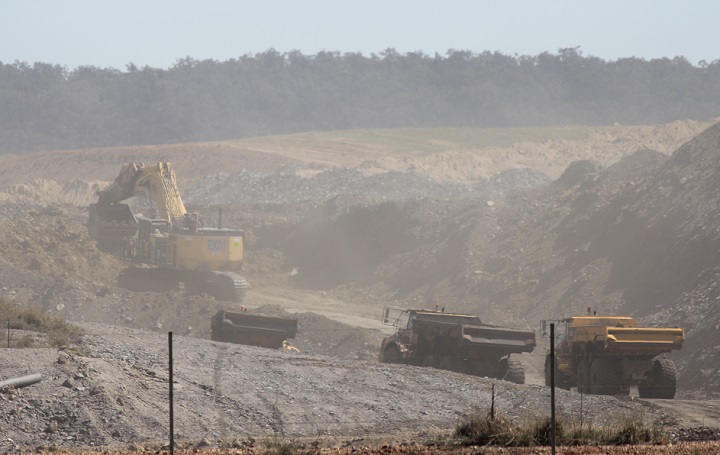
Wilpinjong mine 2013.
Background to the Wilpinjong caseWilpinjong coal mine in the south-western edge of the Hunter catchment is owned and operated by Peabody Energy US and has been in operation since 2006. The 28 square kilometre open-cut coal mine lies between Goulburn River National Park and Munghorn Gap Nature Reserve.
In April 2017, Wilpinjong Coal received permission from the Planning Assessment Commission (PAC) [since replaced by the Independent Planning Commission] to expand its open-cut mining operations for an extra seven years and to develop a new open-cut pit that will clear protected native vegetation and bring the mine even closer to the village of Wollar. The Wollar Progress Association - represented by public interest environmental lawyers, EDO NSW - brought court action in August 2017 challenging this decision.
The Wollar Progress Association also argued – unsuccessfully - that the approval was invalid on two other grounds. Firstly, that the PAC was not properly constituted in accordance with legal requirements; and secondly, that the PAC did not undertake a proper assessment of the impacts on biodiversity, as the mine extension would clear endangered ecological communities.
Both grounds were affected by NSW Government amendments to the Environmental Planning and Assessment Act 1979 (NSW) - clearly designed to nullify these aspects of our case before the hearing commenced.

Lock The Gate Urges Reinstatement Of Legal Check And Balance In Wake Of Wollar Court Loss
June 20, 2018The devastating loss yesterday of Wollar Progress Association’s judicial review challenge to the approval of the Wilpinjong coal mine expansion has prompted Lock the Gate Alliance to call on the New South Wales Government to restore full legal appeal rights to communities affected by large scale coal mines.
Planning law in New South Wales allows the Planning Minister to take away the right to challenge the merit of coal mine approvals in the Land and Environment Court simply by telling the Independent Planning Commission to hold a public hearing. It is now routine for this to be done for all large and controversial mining projects, including the Wilpinjong Extension Project.
Communities affected by large coal mines in the Hunter Valley have repeatedly appealed to the Government to stop taking away the public’s right to challenge the merits of mining approvals that have significant environmental and social impacts.
Lock the Gate Alliance spokesperson Georgina Woods said, “We have this terrible regulatory failure where decisions are made to approve coal mines that have irreversible damaging consequences, but there is no legal avenue for communities to appeal to the Land and Environment Court to test whether the Planning Commission got the balance right and made the right decision.
“The community at Wollar had only very narrow legal rights to challenge the approval of the Wilpinjong coal mine expansion. They were denied the right to seek review in the Land and Environment Court of the merits of the expansion of the Wilpinjong mine.
“The Planning Commission is not going to always make the right decision. No one does. Without merits appeal rights, bad decisions can’t be revisited and reviewed and over time, that means we’re losing small villages, we’re losing water resources and we’re losing productive land to coal mines that really are not in the public interest.
“You have to ask, what is the Government so afraid of that it continually closes off legal avenues for appeal for people affected by coal mines? Are they afraid that the Court will find that some of the coal mines being approved aren’t in the public interest after all?
“What the Hunter Valley needs is balance and to have balance, you need the crucial legal right to go to court and test the merits of mining approvals. We’re appealing to Planning Minister Anthony Roberts to let there be reasonable checks and balances in these high stakes mining decisions.”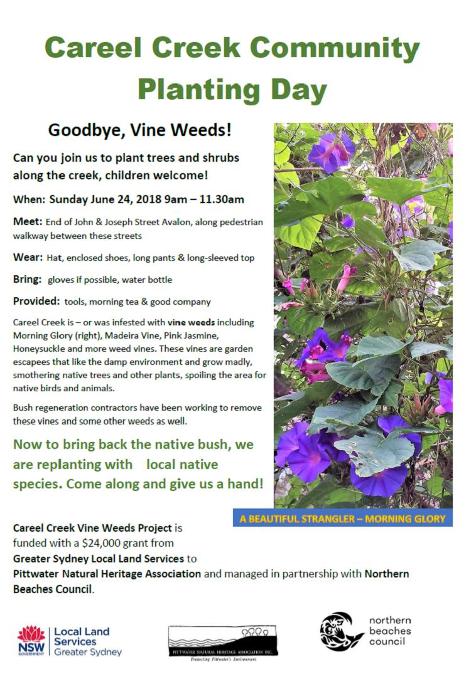
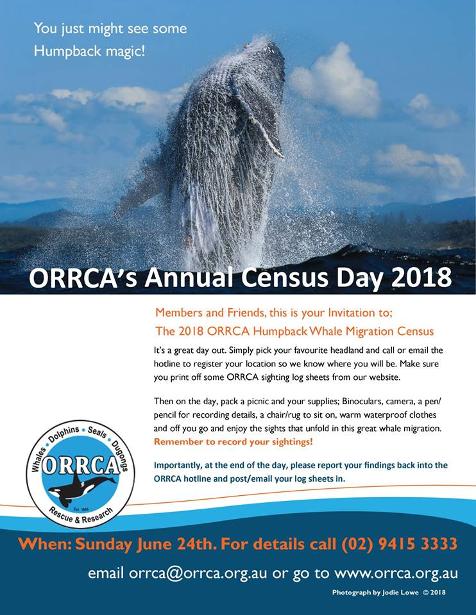


Sydney Metro Northwest: Proposed SEPP Amendment
June 8, 2018: NSW Department of PlanningYou are invited to have your say on a proposed amendment to the State Environmental Planning Policy (State and Regional Development) 2011 for the development of government-owned land adjoining the Sydney Metro Northwest corridor.
The proposed amendment to the State and Regional Development SEPP aims to ensure a state-led, consistent and transparent planning pathway for the development of government land within the eight station precincts along Australia’s largest public transport infrastructure project; the $8.3 billion Sydney Metro Northwest.
Outlined in the consultation paper, the proposed amendment nominates the Minister for Planning as the consent authority for future development on identified government-owned land, if the development meets the criteria of State Significant Development.
State Significant Development must meet one or more of the following criteria: - a principal subdivision establishing major lots or public domain areas - the creation of new roadways and associated works - has a capital investment value of more than $30 million.Exhibition Commences 08/06/2018Exhibition Concludes 06/07/2018
NOPSEMA - Open For Comment: Environment Plan Assessment Guidance
Overview
Since 2012, NOPSEMA has developed a series of guidance documents to inform and assist stakeholders in understanding NOPSEMA’s decision-making on environment plans and advise titleholders on how to interpret and meet the requirements of the Offshore Petroleum and Greenhouse Gas Storage (Environment) Regulations 2009 (Environment Regulations). This guidance is comprised of a number of different document types, including:- policies that provide NOPSEMA’s interpretation of legislative provisions
- guidelines that provide NOPSEMA guidance on how to meet legislative requirements
- guidance notes that provide NOPSEMA’s expectations on an environmental management topic
- information papers that provide further information, background and practices to foster improved environmental management outcomes.
In November 2017, the Minister for Resources and Northern Australia, Senator the Hon Matthew Canavan, announced a series of changes to improve the transparency of offshore petroleum environmental management. The Department of Industry, Innovation and Science has commenced work to develop the necessary regulatory amendments.
In preparation for these changes, NOPSEMA is now seeking feedback on its guidance documents relating to the assessment of environment plan.
Guidance open for commentNOPSEMA is seeking comment on the following key documents:PL1347 - Environment plan assessment - Rev 6 - April 2017 (PDF 534KB)GN1344 - Environment plan content requirements - Rev 3 - April2016 (PDF 1.1MB)GL1721 - Environment plan decision making - Rev 5 - June 2018(PDF 342KB)GL1566 - Environment plan summaries - Rev 1 - July 2016 (PDF 196KB)IP1411 - Consultation requirements under the OPGGS Environment Regulations 2009 - Rev 2 - December 2014 (PDF 184KB)
Comments may also be provided on any other published environmental management guidance document on the Environment Resources page.
How to provide commentComments are to be provided by 20 July 2018 using theONLINE SURVEY. Enquiries should be directed toenvironment@nopsema.gov.au.
Next stepsNOPSEMA will consider the feedback received during the public comment period and may also conduct further consultation with stakeholders to address comments received. NOPSEMA will aim to publish a report by the end of 2018 to collate the comments received and provide a response on the merits of the feedback.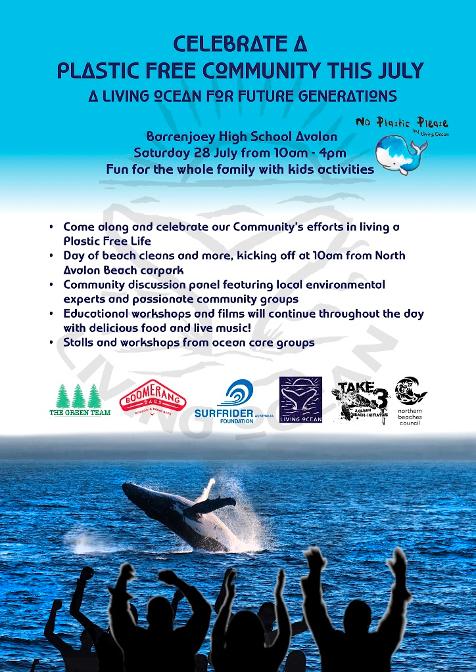
- policies that provide NOPSEMA’s interpretation of legislative provisions
- guidelines that provide NOPSEMA guidance on how to meet legislative requirements
- guidance notes that provide NOPSEMA’s expectations on an environmental management topic
- information papers that provide further information, background and practices to foster improved environmental management outcomes.

Budget Boost For Conservation
June 19, 2018: Media release - The Hon. Gabrielle Upton, NSW Minister for EnvironmentA $50 million commitment in today's Budget effectively doubles the amount the NSW Government spends to purchase conservation land over 5 years."This is a fantastic outcome for conservation," Environment Minister Gabrielle Upton said.
"The plan is simple: purchase high conservation-priority land and add it to the State's reserves.
"It's a major win for the environment and provides a significant boost to the protection of our State's biodiversity.
"The purchases will be made under the Environmental Trust's Land Acquisition Program.
"It's another way we are increasing the State's National Parks estate, which allows us to protect a vast range of habitats and ecosystems, plant and animal species and landforms.
"In particular, we want to increase koala habitat to support the Government's recently announced Koala Strategy.
"This move effectively doubles the usual $5 million a year the Environmental Trust has committed to important land acquisition for the reserve system.
"Altogether, some $24.95 million has now been allocated by this Government to acquire land containing high-priority koala habitat.
"This investment in land acquisition for national parks, combined with the conservation efforts on private land, is another clear demonstration of the Government's commitment to taking action to improve environmental outcomes for NSW."
$1 Billion To Improve Liveability
June 19, 2018: Media Release - NSW Budget 2018–19, Anthony Roberts, Minister for Planning, Minister for Housing and Special Minister of StateAs part of the 2018-19 Budget, $157.5 million will support recently announced initiatives to secure strategic open space, create and upgrade playspaces, and increase the tree canopy across Sydney, as part of the Five Million Trees for Greater Sydney program. Minister for Planning and Housing Anthony Roberts said the funding of these projects will support the NSW Government’s recent announcement of the Open Spaces and Greener Sydney package. “The funding that has been dedicated in this year’s Budget will enable land to be identified and purchased for public open space,” Mr Roberts said. “This comes after recent strategic land purchases by the NSW Government including 16 hectares of land in West Hoxton that comprises the critically endangered ecological community Cumberland Plain Woodland, which is to be dedicated open space as an extension to the Western Sydney Parklands. “Funding will also go towards the Everyone Can Play in NSW program that will fund Councils by way of grants to renew, renovate or build more than 200 playgrounds. “The NSW Government will plant more than 380,000 trees every year until 2030, as part of the 'Five Million Trees for Greater Sydney' program, that will more than double the tree canopy in Sydney from 16.8 per cent at present to a target 40 per cent.” The Government has also committed to investing $1.4 billion over the next four years to help build essential local infrastructure and support growing communities. Announced as part of the 2018-19 Budget, $235 million will be delivered this financial year, for infrastructure to support new housing. Mr Roberts said funding in this year’s Budget and in the years to come will be vital in providing infrastructure needed for growing communities.
“The funding dedicated in this year’s budget will help provide essential infrastructure to support development in the areas where it is needed,” Mr Roberts said. “This funding will provide for vital infrastructure such as roads, transport, parks, cycle and walkways, and drainage. “As Sydney grows, it’s essential we back it up with targeted infrastructure development to ensure that our communities remain liveable.”
Please Help: Contribute To Significant Trees Register For Our Area
Significant trees listings wanted
Avalon Preservation AssociationThe next step in the Avalon Preservation Association's Avalon Cultural Audit is to identify and list significant trees in the area.
Roger Sayers has nominated the Spotted Gums in the reserve opposite Careel Bay Wharf.
Please help us by contributing your pick of significant trees in the area so we can map them and enter into our database.
You can either post a picture/s on the APA Facebook page and identify location of tree/s and species type if known or email us with same at secretary@avalonpreservationassociation.org.au
Our new Avalon Preservation Association Noticeboard is finally installed on corner of Belle Property Building near Herforts Chemist Old Barrenjoey Rd Avalon Beach. Many thanks to Mark Griffin Belle Property for use of wall and Robert Adema for installation.
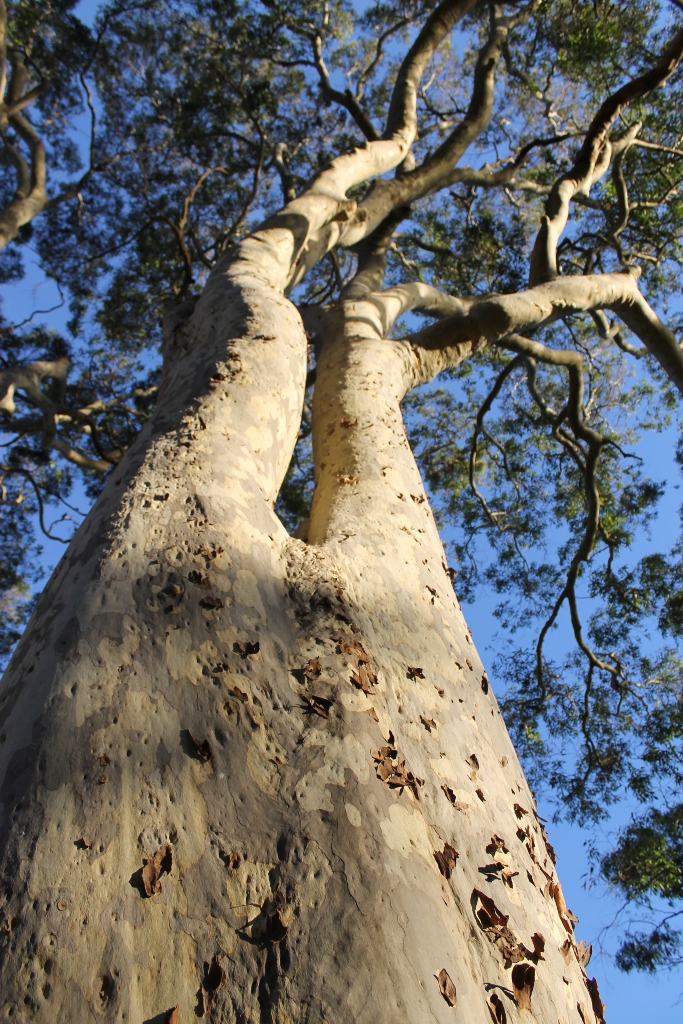

Give Seals Space While They Rest
June 22, 2018: NPWSFollowing a string of seal sightings along the coast over the past week the NSW National Parks and Wildlife Service (NPWS) is calling on the public to give them plenty of space after small crowds gathered at a number of locations to get a closer look.
NPWS Ranger, Andrew Marshall, said today that when the seals haul out at beaches and rocky headlands people often mistakenly think they are in distress.
"Seal numbers are steadily growing and while they have become a fairly common sight on the south coast over the past twenty years and less so north of Sydney over the same time, we are now seeing more and more hauling out along the northern NSW coastline," he said.
"North of Sydney they are still a bit of a novelty for the public and of course that means they draw crowds of onlookers.
"People often think they are in trouble when they haul out along the coast but the reality is that the vast majority of these animals are simply having a rest and people should keep at least 40 metres away from adults and 80m if they are a pup.
"Only very occasionally do they require veterinary assistance," he said.
So far this week a half a dozen seals have been reported from as far south as Jervis Bay up to the mid north coast and include Sub Antarctic and New Zealand Fur seals and even one Long-nosed Fur Seal.
A large male New Zealand Fur Seal and a much smaller Sub Antarctic Fur Seal is still drawing the crowds at Lighthouse Beach at Port Macquarie.
"They might look fairly docile lying on a beach but they can move faster than you can when roused and they have a good set of sharp teeth.
"They are wild animals and so they can be dangerous if you get too close.
"The law states that you must remain at least 40 metres distance from a resting fur seal.
"Mostly they just want to rest at a location for a few days and they need this so please leave them alone. If you see a seal in distress or injured report them to the NPWS or ORRCA (Organisation for the Rescue and Research of Cetaceans in Australia) but give them space please," Mr Marshall said.
Have Your Say On The Management Of Forests
May 15, 2018: Media Release
The NSW Government has begun consultation on the new Coastal Integrated Forestry Operations Approvals (IFOA), which sets out how native forestry operations are managed and regulated on public land in NSW.
Minister for Lands and Forestry Paul Toole and Minister for the Environment Gabrielle Upton said the Coastal IFOA remake was a vital step forward in the NSW Government’s forestry reform agenda.
“The NSW Government is committed to the long term and sustainable management of NSW’s forestry estate, for the benefit of the community, environment and our $2.4 billion forestry and product manufacturing industry,” Mr Toole said.
“The NSW Government is determined to get the right balance between the environment and industry – environmental standards can be strengthened at the same time as providing long term security of wood supply and certainty to investors and the industry.
“For the proposed new Coastal IFOA, this means ensuring that we do not erode environmental values or impact the critical wood supplies that our regional economies or industry rely on.
“Over the past six months, we have undertaken consultation on the Regional Forest Agreements, and this is the next important step.”
Ms Upton said the new Coastal IFOA includes once-in-a-generation changes that will ensure the environment is protected.
“For the first time ever, minimum thresholds are being set for the permanent protection of threatened species and habitat across the landscape, and the rules will be more transparent and enforceable,” Ms Upton said.
New legislation will be introduced that will increase penalty notices for not complying with the Coastal IFOA from $1,100 to $15,000. All other private native forestry businesses and regulated industries in NSW already face fines of at least $15,000.
“These changes are making it fairer for all industries to do business in NSW, while offering further protections to our State's forests,” Ms Upton said.
Other changes to the Coastal IFOA include:- The merger of four current Coastal IFOAs into a single approval for the entire coast of NSW;
- New rules that place limits on harvesting impacts over time and across the landscape;
- Map-based protections with simplified rules for operating near boundaries;
- Increased mapping of threatened ecological species, koala habitats, streams and trees, and;
- Permanent protections for giant trees and hollow-bearing trees.
- To complement the new Coastal IFOA, the NSW Government will soon commence a mapping exercise, applying modern technologies to gain a better understanding of key state forest sites on the north coast.
This work will be overseen by the Natural Resources Commission with independent environmental assessments to be designed and carried out by the Office of Environment and Heritage. The public will have a chance to have their say on the proposed framework and mapping approach in 2019.
For more information, and to have your say on the Coastal IFOA, visit: https://engage.environment.nsw.gov.au/forests
- The merger of four current Coastal IFOAs into a single approval for the entire coast of NSW;
- New rules that place limits on harvesting impacts over time and across the landscape;
- Map-based protections with simplified rules for operating near boundaries;
- Increased mapping of threatened ecological species, koala habitats, streams and trees, and;
- Permanent protections for giant trees and hollow-bearing trees.
- To complement the new Coastal IFOA, the NSW Government will soon commence a mapping exercise, applying modern technologies to gain a better understanding of key state forest sites on the north coast.
Extension Of Public Consultation For Draft Coastal IFOA
Following requests from stakeholders, the Minister for the Environment and Minister for Lands and Forestry have decided to extend the public consultation period for the draft Coastal IFOA for an additional two weeks. The deadline for submissions will now be Friday 13 July 2018.______________________________
From 'Proposed multi-scale landscape approach – download theMulti Scale Approach Factsheet here' Doc.;COASTAL IFOA SCALE• Includes all public coastal forests in NSW and consists of over 5.2 million hectares.• Across this area of public forests is a patchwork of State Forests and forest protected in National Parks and State Flora Reserves.• State Forests make up around 30% of the public forests in the Coastal IFOA area. Native timber production forests cover around 16% of this area.Environmental protections include:• An established network of protected public land conserving important habitat and ecosystems across coastal NSW.• The broad landscape-based habitat protection network includes National parks, Flora Reserves and special management zones.• Annual timber volume caps are also set to ensure a long term ecologically sustainable supply of timber.• Reporting requirements apply and monitoring to evaluate and ensure environmental outcomes are being achieved.
MANAGEMENT ZONE SCALE• A defined geographic region with an average size of 50,000 hectares.• Multiple timber production forests occur within each management area.• These areas will be fixed and mapped at the commencement of the proposed IFOA.• On average 50% of the management zone of state forests is protected.Environmental protections include:• Annual limits on the amount of harvesting in each management area to distribute harvesting across the landscape.• A maximum of 10% of a management area can be harvested per year.• If the management area is zoned for intensive harvesting,then a maximum of only 5% of that management area can be intensively harvested per year
LOCAL LANDSCAPE AREA SCALE• A defined area of timber production forests no larger than 1500 hectares.• On average there are four local landscape areas in each State Forest.• These areas will be mapped out progressively over time.• An average of 38% is protected before the new wildlife habitat clump requirements are considered. This will increase to an average of 41%.Environmental protections include:• A minimum of 5% of the harvest area to be permanently protected as a wildlife habitat clump to maintain habitat diversity and connectivity.• Rainforest, high conservation value old growth, habitat corridors and owl habitat will continue to be protected.• Threatened ecological communities have been mapped and will be excluded from harvesting.• Streams are more accurately mapped and exclusion zones apply to provide landscape connectivity and protect waterways.• Distributes intensive harvesting across the landscape and over a minimum 21 year period.• Improved koala mapping to retain koala browse trees to support movement between areas and food resources.
SITE• A site is the area where harvesting is taking place. Sites vary in size from about 45 to 250 hectares.• There are many sites, called coupes or compartments, within each local landscape area.• An average of 41% of State Forests at a site scale will be protected, increasing to 45% with added tree retention clumps.
Environmental protections include:• Areas will be permanently protected to provide short term refuge, maintain forest structure, and protect important habitat features.• Additional areas no less than 5 – 8% of the harvest area will be permanently set aside as new tree retention clumps.• Hollow-bearing trees, nest and roost trees and giant trees will be permanently protected to provide ongoing shelter and food resources.• Some target surveys will be retained for unique species of plants and animals that require protection.• Sites will now be measured, mapped and monitored with mobile and desktop devices.
Visit: Proposed changes to timber harvesting in NSW's coastal forests - NSW Government; 'Once approved, the new Coastal IFOA will set the rules for how we use and harvest these forests so it’s important that you have your say.'
$196m For A Healthier Environment
June 19, 2018: EPA
The NSW Government has committed $196 million in the 2018-19 Budget to protect the health of the environment, reduce waste and strengthen recycling, Environment Minister Gabrielle Upton announced today.
“The NSW Government is committed to providing a healthy environment for future generations,” Ms Upton said.
The Environment Protection Authority budget for 2018-19 includes- $70 million to improve waste management and resource recovery
- $8 million for the management of contaminated land
- $5 million for asbestos management, including emergency asbestos clean-up.
“The 2018-19 Budget provides support for programs and initiatives to reduce litter and waste, tackle illegal dumping and strengthen recycling,” Ms Upton said.
“Diverting waste from landfill is a key priority and the NSW Government has set targets to increase the diversion of waste from landfill from 63% in 2014-15 to 75% by 2021.
“The Premier has also made it a priority to reduce the volume of litter in NSW by 40% by 2020, achieved through Return and Earn, Hey Tosser and council and community litter prevention grants.”
“In March, I announced a support package of up to $47 million to help local government and industry to respond to China’s National Sword policy.
“The support package provides a range of short, medium and long-term programs to ensure kerbside recycling continues and to promote industry innovation.”
Ms Upton said there is also funding for the emergency clean-up of asbestos, managing James Hardie Asbestos legacy sites at Parramatta and support for the Broken Hill Lead program and the management of PFAS.
- $70 million to improve waste management and resource recovery
- $8 million for the management of contaminated land
- $5 million for asbestos management, including emergency asbestos clean-up.
Pittwater Reserves
Annie Wyat Reserve - A W PictorialBarrenjoey Headland: Spring flowers Barrenjoey Headland after fire
Permaculture Northern Beaches 2018 Events
 Manly • Warringah • Pittwater | Sydney
Manly • Warringah • Pittwater | Sydney
Permaculture Northern Beaches (PNB) is an active local group based on Sydney's Northern Beaches. Our parent body is Permaculture Sydney North.
PNB hold monthly permaculture related events on the 4th Thursday of each month at 7:15pm at the Nelson Heather Community Centre, Banksia Room, 5 Jacksons Rd, Warriewood
 Manly • Warringah • Pittwater | Sydney
Manly • Warringah • Pittwater | SydneyGreen Team Beach Cleans 2018!
Hosted by The Green TeamThe Green Team is back for 2018! It has been estimated that we will have more plastic than fish in the ocean by 2050...These beach cleans are aimed at reducing the vast amounts of plastic from entering our oceans before they harm marine life.
Anyone and everyone is welcome! If you would like to come along, please bring a bucket, gloves and hat. Kids of all ages are also welcome!
The Green Team is a Youth-run, volunteer-based environment initiative from Avalon, Sydney. Keeping our area green and clean.


Create a Habitat Stepping Stone!
Over 50 Pittwater households have already pledged to make a difference for our local wildlife, and you can too! Create a habitat stepping stone to help our wildlife out. It’s easy - just add a few beautiful habitat elements to your backyard or balcony to create a valuable wildlife-friendly stopover.
How it works
1) Discover: Visit the website below to find dozens of beautiful plants, nest boxes and water elements you can add to your backyard or balcony to help our local wildlife.
2) Pledge: Select three or more elements to add to your place. You can even show you care by choosing to have a bird appear on our online map.
3) Share: Join the Habitat Stepping Stones Facebook community to find out what’s happening in the natural world, and share your pics, tips and stories.
What you get
• Enjoy the wonders of nature, right outside your window. • Free and discounted plants for your garden. • A Habitat Stepping Stone plaque for your front fence. • Local wildlife news and tips. • Become part of the Pittwater Habitat Stepping Stones community.
Get the kids involved and excited about helping out!www.HabitatSteppingStones.org.au
No computer? No problem -Just write to the address below and we’ll mail you everything you need. Habitat Stepping Stones, Department of Environmental Sciences, Macquarie University NSW 2109. This project is assisted by the NSW Government through its Environmental Trust
Create a Habitat Stepping Stone!
Over 50 Pittwater households have already pledged to make a difference for our local wildlife, and you can too! Create a habitat stepping stone to help our wildlife out. It’s easy - just add a few beautiful habitat elements to your backyard or balcony to create a valuable wildlife-friendly stopover.
How it works
1) Discover: Visit the website below to find dozens of beautiful plants, nest boxes and water elements you can add to your backyard or balcony to help our local wildlife.
2) Pledge: Select three or more elements to add to your place. You can even show you care by choosing to have a bird appear on our online map.
3) Share: Join the Habitat Stepping Stones Facebook community to find out what’s happening in the natural world, and share your pics, tips and stories.
What you get
• Enjoy the wonders of nature, right outside your window. • Free and discounted plants for your garden. • A Habitat Stepping Stone plaque for your front fence. • Local wildlife news and tips. • Become part of the Pittwater Habitat Stepping Stones community.
Get the kids involved and excited about helping out!www.HabitatSteppingStones.org.au
No computer? No problem -Just write to the address below and we’ll mail you everything you need. Habitat Stepping Stones, Department of Environmental Sciences, Macquarie University NSW 2109. This project is assisted by the NSW Government through its Environmental Trust
Marine Reserves Are Vital - But Under Pressure
June 22, 2018: James Cook UniversityA massive study of nearly 1800 tropical coral reefs around the world has found that marine reserves near heavily populated areas struggle to do their job -- but are a vast improvement over having no protection at all.
Professor Josh Cinner from the ARC Centre of Excellence for Coral Reef Studies at James Cook University in Australia led a team of 37 scientists examining the effectiveness of different reef conservation strategies.
"Fish stocks were extremely depleted on reefs that were accessible to large human populations. Compared to marine reserves far from these human pressures, reserves near high human pressure had only a quarter of the fish and were a hundred times less likely to have top predators such as sharks," said Professor Cinner.
The scientists also studied how differences in ecological conditions between marine reserves, where fishing is prohibited, and places open to fishing changed as human pressures increased. "This tells you where you can get the biggest impact from implementing conservation," said Professor Cinner.
"A really novel and exciting part of our study found that the greatest difference in fish biomass between marine reserves and places open to fishing was in locations with medium to high human pressure. This means that, for most fisheries species, marine reserves have the biggest bang where human pressures are medium to high," he said.
For example, on reefs subject to high human pressure, marine reserves had five times more fish than openly fished reefs -- a benefit that can spillover into the depleted fisheries in surrounding areas.
"However, top predators such as sharks were a different kettle of fish," said co-author Dr Aaron MacNeil from Dalhousie University.
The scientists encountered top predators on less than 30% of their surveys conducted all across the globe, and very rarely in locations where human pressures were high.
"You'd have to do about 200 dives to see a top predator in reserves with the highest human pressure. But where human pressure was low, you'd be likely to see predators more than half the time," said Dr MacNeil.
Dr Michele Barnes from the ARC Centre of Excellence for Coral Reef Studies at JCU said that in many places, social, economic, and cultural realities mean that marine reserves that entirely prohibit fishing are not an option.
"So, we also looked at how effective other forms of reef conservation were, such as restricting the types of fishing gear that people use. Our results were promising -- these restrictions certainly had better outcomes than doing nothing, but not as good as marine reserves. They were a sort of compromise," she said.
Professor Cinner said the study makes clear the benefits and limitations of implementing key coral reef conservation strategies in different types of locations. "Our research shows where managers will be able to maximise certain goals, such as sustaining top predators or improving the biomass of key fisheries species, and likewise, where they will be wasting their time," he said.
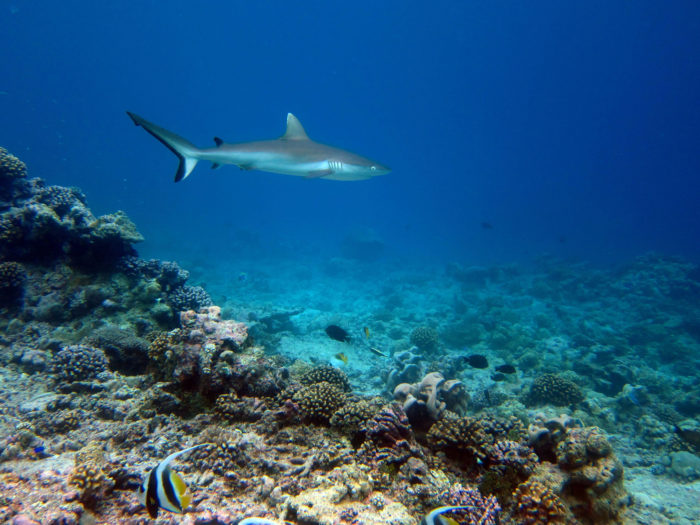
A grey reef shark swims over a reef in a large protected area far from humans. Photo credit: Nick Graham
Joshua E. Cinner, Eva Maire, Cindy Huchery, M. Aaron MacNeil, Nicholas A. J. Graham, Camilo Mora, Tim R. McClanahan, Michele L. Barnes, John N. Kittinger, Christina C. Hicks, Stephanie D’Agata, Andrew S. Hoey, Georgina G. Gurney, David A. Feary, Ivor D. Williams, Michel Kulbicki, Laurent Vigliola, Laurent Wantiez, Graham J. Edgar, Rick D. Stuart-Smith, Stuart A. Sandin, Alison Green, Marah J. Hardt, Maria Beger, Alan M. Friedlander, Shaun K. Wilson, Eran Brokovich, Andrew J. Brooks, Juan J. Cruz-Motta, David J. Booth, Pascale Chabanet, Charlotte Gough, Mark Tupper, Sebastian C. A. Ferse, U. Rashid Sumaila, Shinta Pardede, David Mouillot. Gravity of human impacts mediates coral reef conservation gains. Proceedings of the National Academy of Sciences, 2018; 201708001 DOI:10.1073/pnas.1708001115

Coral Reefs Losing Ability To Keep Pace With Sea-Level Rise
June 14, 2018 ARC Coral Reef StudiesMany coral reefs will be unable to keep growing fast enough to keep up with rising sea levels, leaving tropical coastlines and low-lying islands exposed to increased erosion and flooding risk, new research suggests.
An international team, led by scientists from University of Exeter, Royal Netherlands Institute for Sea Research, Lancaster University and the Australian Research Council’s Centre of Excellence for Coral Reef Studies (Coral CoE), compared the maximum upward growth rates of coral reefs with predicted rates of sea-level rise, and found many reefs will be unable to keep pace.

Eroding reef. Photo by Prof Chris Perry, University of Exeter.
The growth of coral reefs is strongly influenced by the amount and types of coral living on the reef surface. This growth is now being hampered by combinations of coral disease, deteriorating water quality and fishing pressure, along with severe impacts from “coral bleaching” caused by climate change.
“For many reefs across the Caribbean and Indian Ocean regions, where the study focused, rates of growth are slowing due to coral reef degradation,” said lead author Professor Chris Perry, of the University of Exeter.
“Meanwhile, rates of sea-level rise are increasing – and our results suggest reefs will be unable to keep up. As a result, water depths above most reefs will increase rapidly through this century.”
“Even under modest climate change prediction scenarios (RCP4.5) only about 3% of Indian Ocean reefs will be able to track local sea-level rise projections without sustained ecological recovery, whilst under continued high emission scenarios (RCP8.5) most reefs will experience water depth increases in excess of half a metre,” added co-author Dr Aimée Slangen of NIOZ, Royal Netherlands Institute for Sea Research.
“This is now of critical concern because reefs play a key role as natural sea defences by limiting coastal wave energy exposure,” commented Professor Nick Graham, of Lancaster University, another co-author of the study.
“Efforts to tackle climate change must therefore be coupled with careful management of fishing and water quality protection to prevent widespread submergence through this century.”
The researchers calculated growth rates for more than 200 tropical western Atlantic and Indian Ocean reefs.
“Now more than ever, we must limit global greenhouse gas emissions. Our predictions, even under the best case scenarios, suggest that by 2100 the inundation of reefs will expose coastal communities to significant threats of shoreline change,” said co-author Professor Peter Mumby of Coral CoE at The University of Queensland. “Healthier coral reefs will reduce the rate of seawater inundation.”
Professor Perry concluded: “The most worrying end-point scenario in this respect is that if predictions of increasing bleaching frequency are realised, many reefs may become locked into permanent low growth rate states, leading to more submergence under all future sea-level rise scenarios.”
The paper, published in the journal Nature, is entitled: “Loss of coral reef growth capacity to track sea-level rise under climate change.”
Citation: Perry, Chris T., Alvarez-Filip, Lorenzo, Graham, Nicholas A. J., Mumby, Peter J.,..Macdonald, Chancey et al. (2018). Loss of coral reef growth capacity to track future increases in sea level. Nature, 1476-4687 DOI – 10.1038/s41586-018-0194-z

Bogong Moths First Insect Known To Use Magnetic Sense In Long-Distance Nocturnal Migration
June 21, 2018Each spring, millions of nocturnal Bogong moths hatch across breeding grounds throughout southeastern Australia before flying over 1,000 kilometers through the dark night to reach a limited number of high alpine caves in the Australian Alps. After a few months of summer dormancy in those cool mountain caves, the moths fly right back to the breeding grounds where they were born. Now, researchers reporting in Current Biology on June 21 have found that the moths, like migratory birds, depend on the Earth's magnetic field to guide them on their way.
The discovery offers the first reliable evidence that nocturnal insects can use the Earth's magnetic field to steer flight during migration, the researchers say.
"When we began this study, we were convinced that the Bogong moth would exclusively use celestial cues in the sky, such as the stars and the moon, for navigation during migration," says Eric Warrant of the University of Lund, Sweden. "This, it turned out, was not the case. We were very surprised when we discovered that these moths could sense the earth's magnetic field just like night-migratory birds -- and probably for the same reason."
Bogong moths and monarch butterflies are the only known insects to migrate over such long distances, and along such a specific route, to a distinct and geographically restricted destination visited by thousands of previous generations. In the new study, Warrant, David Dreyer, and colleagues set out to explore how such a small animal, with its tiny brain and nervous system, could travel so precisely and so far, having never been to their destination before. How could the same individuals then find their way back again after months in the mountains?
The researchers tethered migrating moths in an outdoor flight simulator. They found that the moths' flight direction turned predictably when dominant visual landmarks and a natural Earth-strength magnetic field were turned together. When those two cues were turned in conflicting ways, the moths became disoriented within minutes. The findings led the researchers to conclude that Bogong moths rely on a magnetic sense.
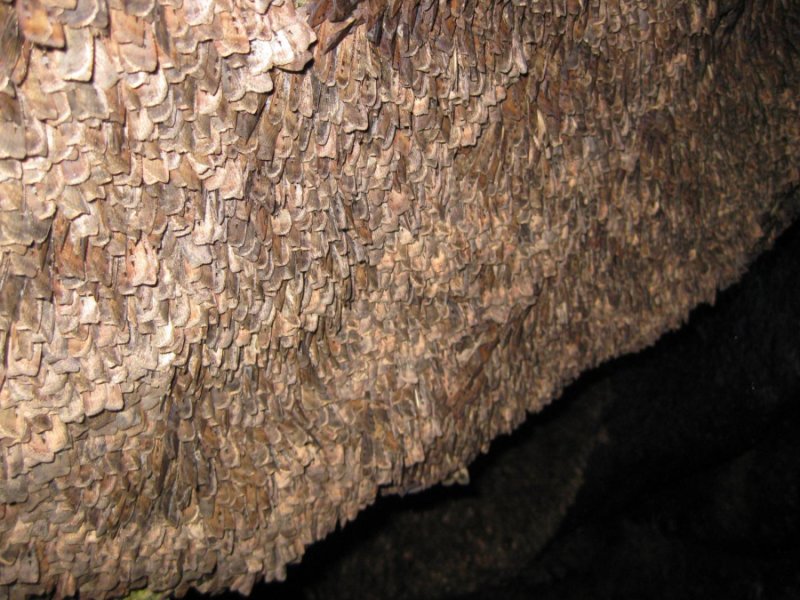
This photograph shows Bogong Moths on a cave wall. Credit: Eric Warrant
The findings suggest that nocturnally migrating insects might use the Earth's magnetic field as a compass during migration just as nocturnally migrating birds do. The researchers suspect the moths use a magnetic compass to determine their migratory direction and then align this direction with a celestial or terrestrial landmark in the same or a similar direction, which they then use as a visual beacon.
"This is essentially the same strategy we use when hiking in wilderness terrain: we determine our direction with a compass and then look for some distant landmark in roughly the same direction -- for instance a mountaintop or a distant tree -- and then head for this as we walk," Dreyer said. "When this landmark is no longer reliable, we again check our direction with the compass and choose a new landmark to orient towards."
The researchers say they would now like to dissect in more detail how and which visual and magnetic cues the moths use and how they are integrated in the brain. Due to the moth's relatively simple nervous system, they also hope to learn how the insects detect magnetic information, something that hasn't yet been achieved in any animal.
"The discovery of the magnetic sensor is one of the Holy Grails of sensory physiology," Warrant says.
David Dreyer, Barrie Frost, Henrik Mouritsen, Anja Günther, Ken Green, Mary Whitehouse, Sönke Johnsen, Stanley Heinze, Eric Warrant.The Earth’s Magnetic Field and Visual Landmarks Steer Migratory Flight Behavior in the Nocturnal Australian Bogong Moth. Current Biology, 2018; DOI: 10.1016/j.cub.2018.05.030

Six New Species Of Goblin Spiders Named After Famous Goblins And Brownies
June 22, 2018Fictional characters originally 'described' by famous English children's writer Enid Blyton have given their names to six new species of minute goblin spiders discovered in the diminishing forests of Sri Lanka.
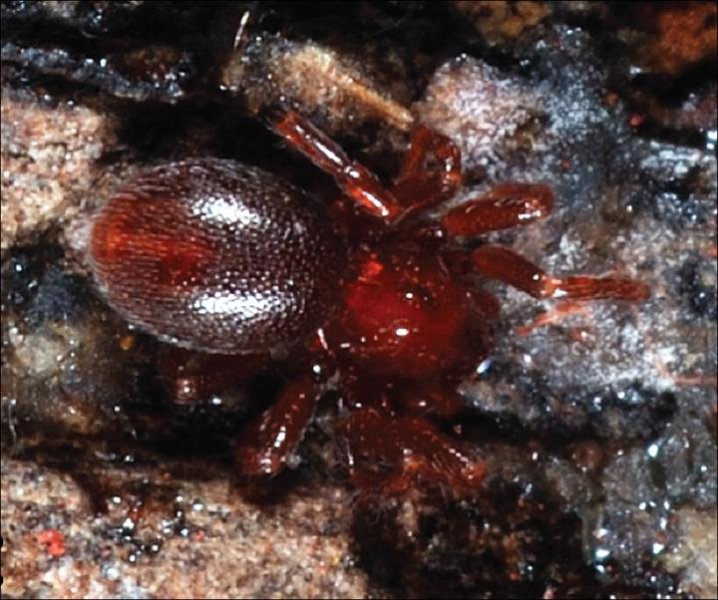
The newly discovered goblin spider species Xestaspis kandy in its natural habitat. Credit: Suresh P. Benjamin CC-BY 4.0
The goblins Bom, Snooky and Tumpy and the brownies Chippy, Snippy and Tiggy made their way from the pages of: "The Goblins Looking-Glass" (1947), "Billy's Little Boats" (1971) and "The Firework Goblins" (1971) to the scientific literature in a quest to shed light on the remarkable biodiversity of the island country of Sri Lanka, Indian Ocean.
As a result of their own adventure, which included sifting through the leaf litter of the local forests, scientists Prof. Suresh P. Benjamin and Ms. Sasanka Ranasinghe of the National Institute of Fundamental Studies, Sri Lanka, described a total of nine goblin spider species in six genera as new to science. Two of these genera are reported for the very first time from outside Australia.
Their paper is published in the open access journal Evolutionary Systematics.
With a total of 45 species in 13 genera, the goblin spider fauna in Sri Lanka -- a country taking up merely 65,610 km2 -- is already remarkably abundant. Moreover, apart from their diversity, these spiders amaze with their extreme endemism. While some of the six-eyed goblins can only be found at a few sites, other species can be seen nowhere outside a single forest patch.
"Being short-range endemics with very restricted distributions, these species may prove to be very important when it comes to monitoring the effects of climate change and other threats for the forest habitats in Sri Lanka," explain the researchers.
In European folklore, goblins and brownies are known as closely related small and often mischievous fairy-like creatures, which live in human homes and even do chores while the family is asleep, since they avoid being seen. In exchange, they expect from their 'hosts' to leave food for them.
Similarly, at size of a few millimetres, goblin spiders are extremely tough to notice on the forest floors they call home. Further, taking into consideration the anthropogenic factors affecting their habitat, the arachnids also turn out to be heavily dependent on humans.
U.G.S.L. Ranasinghe, Suresh P. Benjamin. Taxonomic descriptions of nine new species of the goblin spider genera Cavisternum, Grymeus, Ischnothyreus, Opopaea, Pelicinus and Silhouettella (Araneae, Oonopidae) from Sri Lanka. Evolutionary Systematics, 2018; 2 (1): 65 DOI: 10.3897/evolsyst.2.25200

Midwinter Madness – Antarctic Expeditioners Plunge Into Icy Pool
June 21, 2018Australian Antarctic expeditioners have plunged into a pool cut into the sea ice to celebrate the winter solstice.
With the temperature hovering around minus 22 degrees and the water temperature nearly minus 2 degrees, Casey research station expeditioners took a deep breath before dipping into the icy waters.
Casey Station Leader, Rebecca Jeffcoat, said midwinter day is the most anticipated occasion on the Antarctic calendar and has been celebrated from the time of the early explorers, such as Sir Douglas Mawson, right through to modern day expeditioners.
“Swimming in Antarctica’s below freezing waters is something of a mad tradition, but our hardy expeditioners look forward to it, with 21 of the 26 people on station brave enough to take an icy dip this year,” Ms Jeffcoat said.
“Midwinter day is really important in Antarctica because it marks the halfway point of our year here on the ice and it means the sun will spend slightly longer in the sky each day.”
Midwinter celebrations at Australia’s three Antarctic research stations and sub-Antarctic Macquarie Island, include a feast, exchange of handmade gifts, midwinter play and messages from home.
Celebrations also take place at the Division’s headquarters in Tasmania. There are 75 expeditioners currently living and working in Antarctica as part of the Australian Antarctic Program.
Ms Jeffcoat, who is experiencing her first Antarctic winter, said the continent is extraordinary.
“The environment is spectacular and harsh, and we experience the most incredible range of conditions, from below freezing blizzards to auroras, or the midwinter twilight as the sun skims the horizon,” she said.
“It is challenging being so far from family and friends, but we have built a really close knit community of friends on station that we’ll likely have for the rest of our lives as we’ve shared this great experience together.
“We’re all really proud to be counted as one of the small number or people who have been lucky enough to winter in Antarctica, keeping the station running through the long cold months so we can then support the science of the Australian Antarctic Program.”
The Governor-General, His Excellency General the Honourable Sir Peter Cosgrove AK MC (Retd) and Minister for the Environment and Energy Josh Frydenberg MP sent video greetings to the expeditioners for their midwinter celebrations.
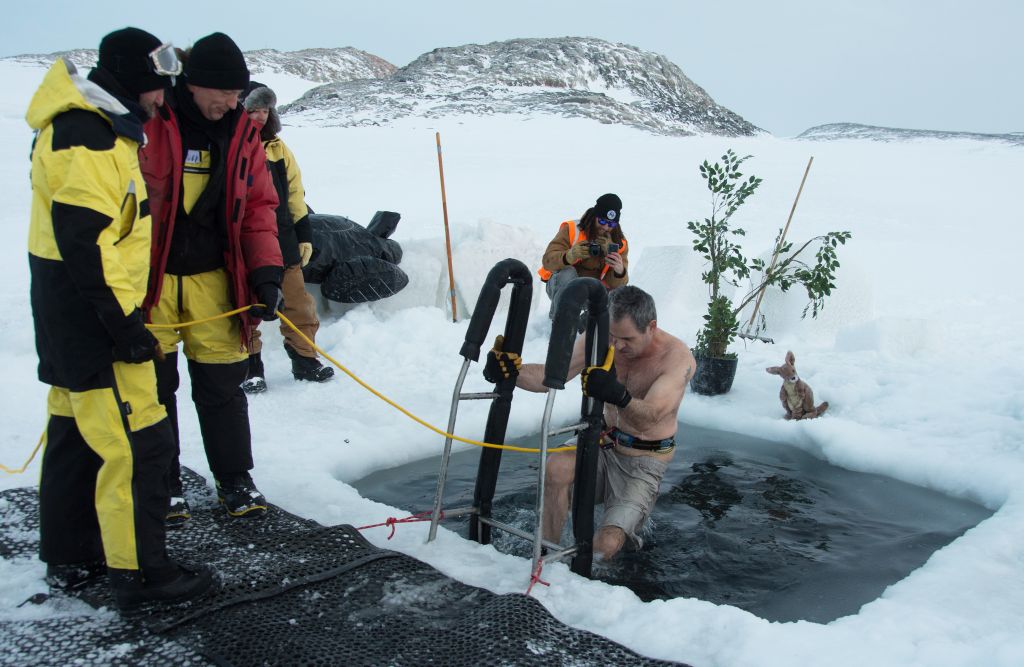
Barry Balkin during his midwinter dip (Photo: George Brettingham-Moore)

A New Era For Antarctic Science
21 June 2018: Joint media release -
The Hon. Josh Frydenberg MPMinister for the Environment and EnergySentator The Hon. Michaelia CashMinister for Jobs and InnovationSenator The Hon. Simon BirminghamMinister for Education and TrainingThe Coalition Government is establishing a new Australian Antarctic Science Council to revitalise science research on a new platform, as well as boost Hobart's position as an Antarctic science hub, and as the premier gateway to Antarctica.
The new Antarctic Science Council will provide further strategic direction for the Australian Antarctic Program, oversee science funding priorities and ensure funds directly support Antarctic research, reducing administrative costs and making it easier to plan multi-year projects.
Australia has developed world-class Antarctic science capabilities over many decades, much of which is based in Hobart. Comprising an independent Chair and representatives from key Antarctic science agencies, the Council will enhance Australia's international reputation for Antarctic science.
The Coalition Government has committed more than $100 million over the next 10 years for Antarctic science, delivered through two new initiatives:
The Antarctic Science Collaboration Initiative with $5 million per year for 10 years from 2019-20, delivered by the Department of Industry, Innovation and Science.The Special Research Initiative in Excellence in Antarctic Science with $8 million per year for seven years from January 2020, delivered by the Australian Research Council.The establishment of the Council is the first step in implementing the recommendations of a review into the governance of Australia's Antarctic Science Program, undertaken by Mr Drew Clarke, a highly-respected former senior public servant.
The review was undertaken to ensure Antarctic investments are effective, joined-up and fit-for-purpose. The Government has supported, either in full or in principle, all nine recommendations in the Clarke Review.
This revamp of science funding delivers on the Coalition Government's Australian Antarctic Strategy and 20 Year Action Plan to increase Antarctic research.
The Clarke Review and the Government's response can be found at www.environment.gov.au/antarctic-review.
Whether Wheat Weathers Heat Waves
June 20, 208A heat wave sweeps through a city and people swelter, running indoors to find air conditioning. But crops out in a field aren't so lucky. For them, there is no escape.
Scientists in Australia are working to understand how heat waves impact wheat. They are mixing observational studies with techniques from computer science. This will allow them to create models to understand how wheat will respond in certain conditions.
Heat can affect plants and the soil, water, air, and microbes around them in many different ways. Knowing how all of these factors affect crops could help farmers protect their plants against heat waves' effects.
"Heat waves can greatly reduce wheat in growing regions and modeling could aid in finding strategies to limit the impact of extreme weather and climate change," says James Nuttall. Nuttall works for Australia's Agriculture Victoria, Department of Economic Development, Jobs, Transport and Resources. "This can specifically come in handy during the sensitive periods of crop flowering and the grain filling phase."
Wheat is an important crop with a worldwide production of 729 million tons in 2014. It is a major source of human nutrition. Nuttall says that maintaining stable production into the future includes finding ways to reduce the effects of heat stress to plants.
Nuttall and his team performed three experiments. They tried to get a complete picture of the different characteristics of heat stress, such as timing, intensity, and duration. They tested how plants responded to a multi-day heat wave and if it affected plants more during their flowering or grain-filling phase. They also studied how water availability during the heat wave affected the wheat.
Results showed that high temperatures five days before the wheat began to flower reduced the number of wheat grains on a plant. Also, a high-temperature event while the grain of wheat was growing reduced how big it got.
They then put all the results together into a computer simulation model. This allowed them to predict how wheat beyond just the plants in their experiment could be impacted by a heat wave.
Nuttall explains: "Crop modeling allows you to test responses for environment or treatment combinations, and also test how those interact with each other."
He says a good example is in climate change studies where scientists are interested in plants' response to carbon dioxide levels, temperature, and rainfall. A crop model allows them to test combinations of these factors on growth and yield.
"These models allow us to make a prediction of crop growth and yield," he says. "In finding ways to combat heat waves, modeling provides a tool to see the effects of climate and weather changes on wheat production. It helps us predict how wheat will react so we can try to stop any negative effects beforehand."
Nuttall says the next step in their research is to test their models using fields of wheat rather than a smaller sample of plants. They ultimately want to include their work in larger crop models to improve them.
"As a scientist, there is satisfaction in finding relationships between crop growth and stresses like heat waves," he says. "I also think the work is valuable because we can help crop models identify possible ways that allow us to keep producing the food our planet needs."
This research was funded by the Australian Grains Research and Development Corporation and Agriculture Victoria, Department of Economic Development, Jobs, Transport and Resources.
James G. Nuttall, Kirsten M. Barlow, Audrey J. Delahunty, Brendan P. Christy, Garry J. O’Leary. Acute High Temperature Response in Wheat. Agronomy Journal, 2018; DOI: 10.2134/agronj2017.07.0392
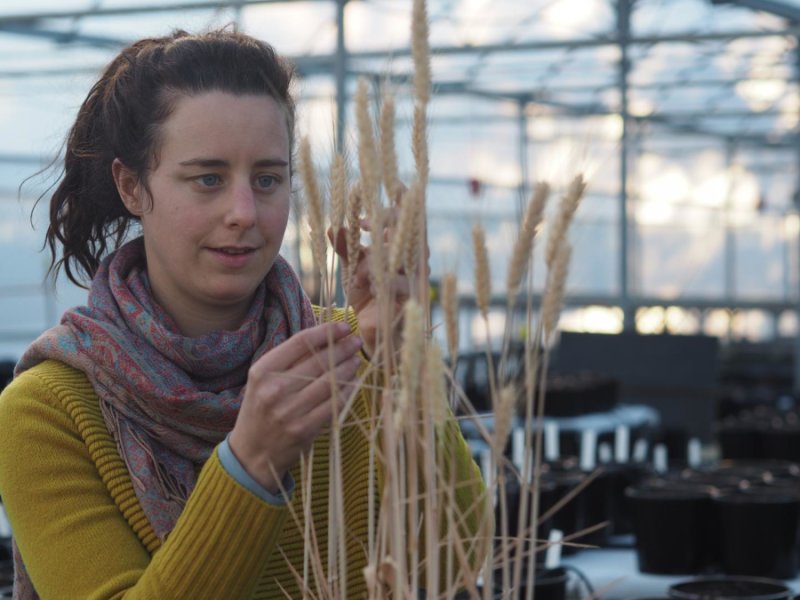
Audrey Delahunty examines wheat exposed to acute high temperature, Agriculture Victoria, Department of Economic Development, Jobs, Transport and Resources. Credit: James Nuttall

Powerful Owl Release
March 18, 2018: Avalon Preservation AssociationPNHA's Jacqui Marlow has advised that a Powerful Owl chick has been released in Plateau Park following its recuperation in Taronga Park.
If you see it there being harassed, or even if you see it at all, can you please phone her on 0458 194 127.
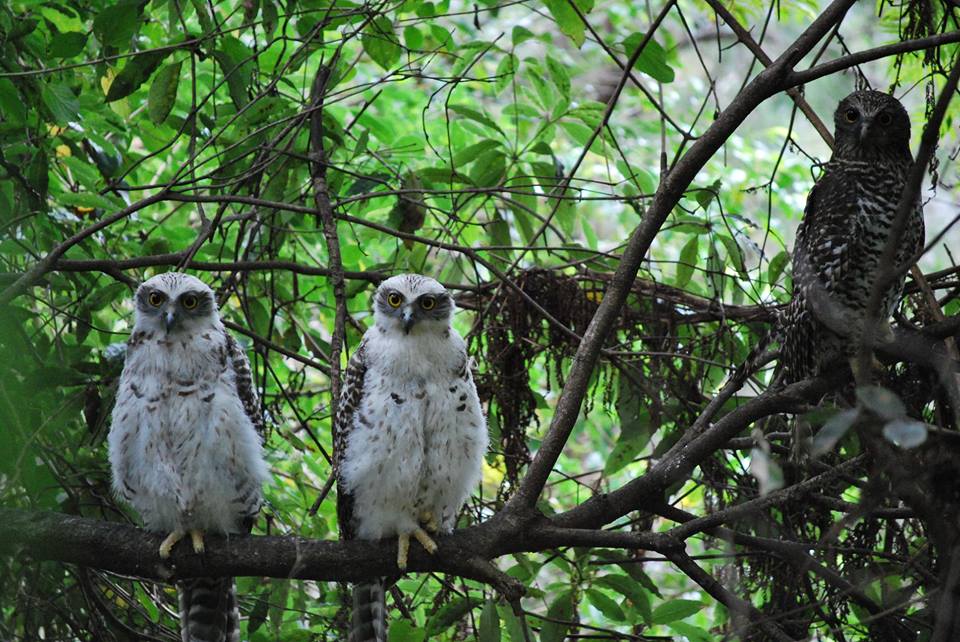
Powerful owl family - photo courtesy PNHA

AUSTRALIA – EU FREE TRADE AGREEMENT
Age Pension Application Process Needs Major Overhaul
Laughter The Best Medicine For World Continence Week
NSW Government Invests In Carers
More Than $25 Billion For Total Health Budget
- An additional $759 million for acute hospital services,providing:
- 40,000 extra emergency department attendances in addition to the 2.9 million currently provided
- 3,200 elective surgeries in addition to the 225,500 currently provided
- 52,000 acute inpatient admissions
- 400,000 more non-admitted patient services on top of the 13.9 million provided
- More than $2.3 billion in capital works funding to continue building and redeveloping hospitals, health facilities and ambulance stations, as part of a record $8 billion investment over the next four years.
- $2.1 billion for mental health services, including $20 million toupgrade mental health facilities as part of a $700 million statewide Mental Health Infrastructure Program.
- $115 million in medical and scientific innovations to help fight diseases, including $60 million for cardiovascular medical research over four years ($150 million over 10 years).
- $944 million in NSW Ambulance services, including $23.7 million for 200 more paramedics and 13 more call centre staff (700 paramedics and 50 call centre staff over four years).
- $38 million to tackle obesity, including $25 million for childhood obesity.
- A new $35.3 million Parents Package to support pregnant women and babies, including 100 more midwives to support maternity services and additional nurses for more postnatal home visits ($157 million over four years).
- $27.1 million for palliative care support, as part of the Government’s $100 million palliative care package.
- An additional $12 million on drug and alcohol services, including expanding youth services, residential rehabilitation and treatment for pregnant women ($850 million over four years).
- $10 million to deliver increased dental services.
- $8.1 million to recruit a further 80 new specialised nursing, midwifery and support positions, fulfilling the Government’s 2015 election commitment to employ an additional 360.
Roads Maritime & Freight Delivering A Stronger More Affordable NSW
A Healthier Start For Aboriginal Kids In NSW
UNSW Report Casts Doubt On Affordable Housing Planning Policy In Sydney
Around The World, People Have Surprisingly Modest Notions Of The 'Ideal' Life
$2.3 Billion Investment Continues NSW Hospitals Building Bonanza
- A major redevelopment of the Liverpool Health and Academic Precinct, including a Comprehensive Cancer Centre, expanded emergency department, surgical, maternity and neonatal care, inpatient and ambulatory care services.
- Stage One of Griffith Base Hospital, which will provide expanded inpatient, ambulatory care services and critical care services.
- Begin work on the Western Cancer Centre at Dubbo, which will deliver an integrated cancer diagnostic and treatment service for people in remote areas of Western NSW.
- Commencing the statewide Mental Health Infrastructure Program, which will focus on improving therapeutic environments in acute mental health units, new specialist services for children and adolescents, mothers and their babies, and older persons, and an enhancement of assessment rooms to provide care and support in the community.
- Commencing a new Rural Health Infrastructure Program, which will provide capacity to undertake upgrades and refurbishments to areas such as emergency departments, bathrooms, waiting areas, wards and treatment spaces of smaller rural facilities, including Tenterfield, Dungog, Scone and Gloucester.
- Continue the Westmead Hospital redevelopment (more than $188 million).
- Continue the expansion of the Blacktown and Mount Druitt Hospitals ($90 million).
- Continue the Nepean Hospital and Integrated Ambulatory Services Redevelopment ($94 million, including the car park).
- Fast track works to expand and refurbish the birthing suite and refurbish existing theatres at St George Hospital ($10 million).
- Refurbish the Bankstown-Lidcombe Emergency Department ($6.5 million).
- Enhance hospital builds already in progress at Grafton, Inverell, Manning, Coffs Harbour, Cooma and Bowral (an extra $22.5 million in 2018-19, bringing the total 2018-19 allocation to $87 million). • $75 million for the next stage of Rouse Hill.
- Commence car parks at Campbelltown, Wyong and Port Macquarie hospitals ($33.6 million).
- Rollout of the Critical Communications Enhancement Program for NSW Ambulance, including the enhanced Government Radio Network, which will consolidate more than 70 separate radio networks to a single platform, addressing priority blackspots, and development of a "Push to Talk" service on ruggedised smartphone handsets as a fallback option during network failures ($17.7 million).
- Undertake planning for John Hunter, Nepean Stage 2, Sydney Children’s Hospital Westmead Stage 2, Albury medical care and obstetric and neonatal services, Canterbury, Bankstown, Shoalhaven (Nowra), Hornsby and Goulburn ambulatory care ($15 million).
- Continue work on building new hospitals at Tweed, Macksville, Maitland, and Mudgee ($108.6 million).
- Continue three Information and Communication Technology projects to deliver easy to read, accurate and more accessible patient records and hospital pathology results, and upgrade digital infrastructure across the State ($115.1 million).
- Continue to invest in NSW Ambulance stations across the State through the Sydney Ambulance Metropolitan Infrastructure Strategy ($20 million) and the Rural Ambulance Infrastructure Reconfiguration program ($16.4 million).
- Continue to foster cutting-edge research and clinical innovation with the second phase of the Medical Research Infrastructure Initiatives ($11 million).
$14.4 Billion To Deliver Public Transport
- $1.5 billion to maintain the Sydney Trains and NSW TrainLink Intercity networks, helping make journeys more reliable and facilitating rail freight movement through the state’s busiest rail corridors;
- $1.2 billion for public transport concessions including pensioners, seniors, people with disabilities and the school student transport scheme;
- $137 million for the Northern Beaches B-Line, with infrastructure improvements along the route between Mona Vale and the Sydney CBD to further improve reliability;
- $132 million toward the Central Walk project, a new underground pedestrian concourse at Central Station to better connect customers to trains, light rail and new Sydney Metro underground platforms;
- $87 million for Community Transport and Home and Community Care services to help people across the state who have difficulties accessing transport, and;
- Funding for planning of additional commuter car parking at Leppington, Edmondson Park, Engadine, and Schofields.
Toothpaste And Hand Wash Are Causing Antibiotic Resistance
Atrial Fibrillation: Weight Loss Reverses Heart Condition In Obesity Sufferers
Why Older People Respond Poorly To Cancer Treatment
- half (58 per cent) of new cancer cases diagnosed
- three-quarters (77 per cent) of cancer related deaths
Fetal T Cells Are First Responders To Infection In Adults
Scientists Calculate Impact Of China's Ban On Plastic Waste Imports
Disclaimer: These articles are not intended to provide medical advice, diagnosis or treatment. Views expressed here do not necessarily reflect those of Pittwater Online News or its staff.